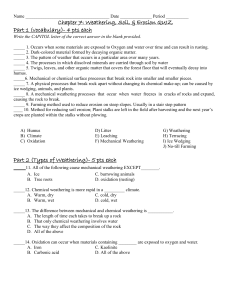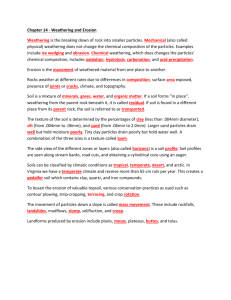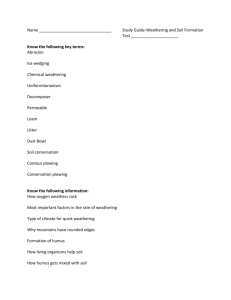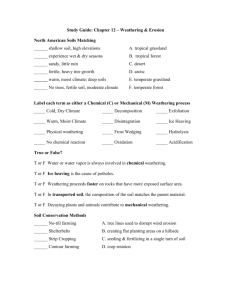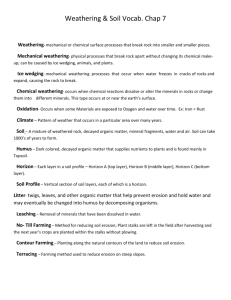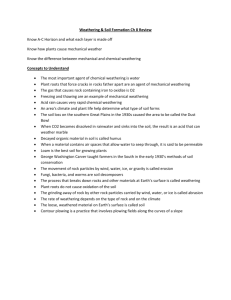Test Objectives for Soil Nutrients/Pesticides and Water Qualities
advertisement
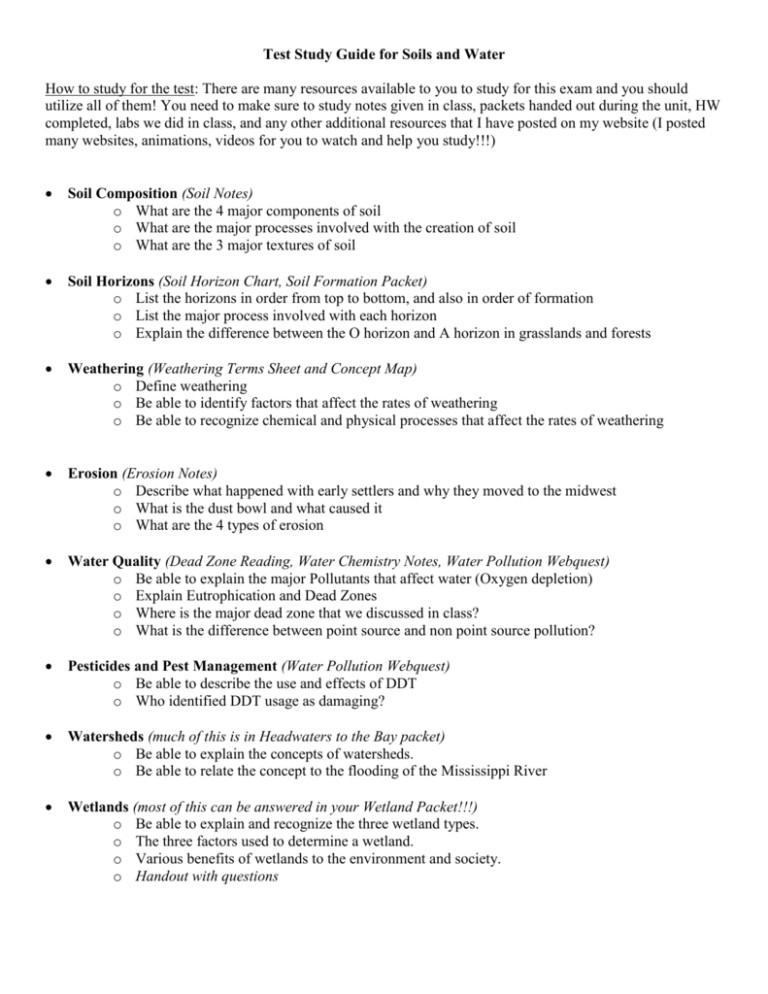
Test Study Guide for Soils and Water How to study for the test: There are many resources available to you to study for this exam and you should utilize all of them! You need to make sure to study notes given in class, packets handed out during the unit, HW completed, labs we did in class, and any other additional resources that I have posted on my website (I posted many websites, animations, videos for you to watch and help you study!!!) Soil Composition (Soil Notes) o What are the 4 major components of soil o What are the major processes involved with the creation of soil o What are the 3 major textures of soil Soil Horizons (Soil Horizon Chart, Soil Formation Packet) o List the horizons in order from top to bottom, and also in order of formation o List the major process involved with each horizon o Explain the difference between the O horizon and A horizon in grasslands and forests Weathering (Weathering Terms Sheet and Concept Map) o Define weathering o Be able to identify factors that affect the rates of weathering o Be able to recognize chemical and physical processes that affect the rates of weathering Erosion (Erosion Notes) o Describe what happened with early settlers and why they moved to the midwest o What is the dust bowl and what caused it o What are the 4 types of erosion Water Quality (Dead Zone Reading, Water Chemistry Notes, Water Pollution Webquest) o Be able to explain the major Pollutants that affect water (Oxygen depletion) o Explain Eutrophication and Dead Zones o Where is the major dead zone that we discussed in class? o What is the difference between point source and non point source pollution? Pesticides and Pest Management (Water Pollution Webquest) o Be able to describe the use and effects of DDT o Who identified DDT usage as damaging? Watersheds (much of this is in Headwaters to the Bay packet) o Be able to explain the concepts of watersheds. o Be able to relate the concept to the flooding of the Mississippi River Wetlands (most of this can be answered in your Wetland Packet!!!) o Be able to explain and recognize the three wetland types. o The three factors used to determine a wetland. o Various benefits of wetlands to the environment and society. o Handout with questions




